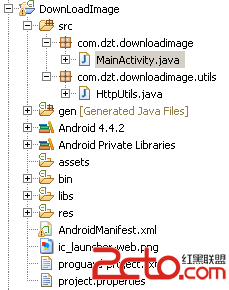編輯:關於Android編程
使用重力傳感器
重力傳感器提供了三個維度的矢量,用來指示重力的方向和重量。下列代碼顯示了如何獲取一個默認的重力傳感器的實例:
private SensorManager mSensorManager;
private Sensor mSensor;
...
mSensorManager = (SensorManager) getSystemService(Context.SENSOR_SERVICE);
mSensor = mSensorManager.getDefaultSensor(Sensor.TYPE_GRAVITY);
單位與加速度傳感器所使用的單位(m/s2)相同,並且坐標系統也與加速度傳感器所使用的坐標系相同。
注意:當設備處於靜止狀態時,重力傳感器的輸出應該與加速度傳感器的輸出相同。
使用陀螺儀
陀螺儀以rad/s(弧度/每秒)為單位圍繞設備的X、Y、Z軸來測量速率或旋轉角度。下列代碼顯示了如何獲取一個默認的陀螺儀的實例:
private SensorManager mSensorManager;
private Sensor mSensor;
...
mSensorManager = (SensorManager) getSystemService(Context.SENSOR_SERVICE);
mSensor = mSensorManager.getDefaultSensor(Sensor.TYPE_GYROSCOPE);
該傳感器的坐標系統與加速度傳感器所使用的坐標系統是相同的。逆時針方向旋轉是正值,也就是說,如果設備是逆時針旋轉,那麼觀察者就會看到一些有關以設備原點為中心的正向的X、Y、Z軸的位置。這是標准的正向旋轉的數學定義,並且與方向傳感器所使用的用於滾動的定義不同。
通常,陀螺儀的輸出會被集成到時間上,以便計算在一定時間不長之上旋轉角度的變化。例如:
// Create a constant to convert nanoseconds to seconds.privatestaticfinalfloat NS2S =1.0f/1000000000.0f;privatefinalfloat[] deltaRotationVector =newfloat[4]();privatefloat timestamp; publicvoid onSensorChanged(SensorEventevent){ // This timestep's delta rotation to be multiplied by the current rotation // after computing it from the gyro sample data. if(timestamp !=0){ finalfloat dT =(event.timestamp - timestamp)* NS2S; // Axis of the rotation sample, not normalized yet. float axisX =event.values[0]; float axisY =event.values[1]; float axisZ =event.values[2]; // Calculate the angular speed of the sample float omegaMagnitude = sqrt(axisX*axisX + axisY*axisY + axisZ*axisZ); // Normalize the rotation vector if it's big enough to get the axis // (that is, EPSILON should represent your maximum allowable margin of error) if(omegaMagnitude > EPSILON){ axisX /= omegaMagnitude; axisY /= omegaMagnitude; axisZ /= omegaMagnitude; } // Integrate around this axis with the angular speed by the timestep // in order to get a delta rotation from this sample over the timestep // We will convert this axis-angle representation of the delta rotation // into a quaternion before turning it into the rotation matrix. float thetaOverTwo = omegaMagnitude * dT /2.0f; float sinThetaOverTwo = sin(thetaOverTwo); float cosThetaOverTwo = cos(thetaOverTwo); deltaRotationVector[0]= sinThetaOverTwo * axisX; deltaRotationVector[1]= sinThetaOverTwo * axisY; deltaRotationVector[2]= sinThetaOverTwo * axisZ; deltaRotationVector[3]= cosThetaOverTwo; } timestamp =event.timestamp; float[] deltaRotationMatrix =newfloat[9]; SensorManager.getRotationMatrixFromVector(deltaRotationMatrix, deltaRotationVector); // User code should concatenate the delta rotation we computed with the current rotation // in order to get the updated rotation. // rotationCurrent = rotationCurrent * deltaRotationMatrix; }}標准的陀螺儀提供了原始的旋轉數據,並不帶有任何過濾或噪音和漂移(偏心)的校正。在實踐中,陀螺儀的噪音和漂移會引入錯誤,因此需要對此進行抵消處理。通常通過監視其他傳感器,如重力傳感器或加速度傳感器來判斷漂移(偏心)和噪音。
 Android使用HttpURLConnection下載圖片
Android使用HttpURLConnection下載圖片
講到http就必需要了解URI和URL URI (uniform resource identifier)統一資源標志符; URL(uniform resource lo
 Android簡單實現無限滾動自動滾動的ViewPager
Android簡單實現無限滾動自動滾動的ViewPager
經常我們會在應用中看到一個可以自動滾動,並且無限滾動的一個ViewPager,百度谷歌上面也有很多關於這方面的教程,但是感覺都略顯麻煩,而且封裝的都不是很徹底。所以試著封
 Android消息機制(Handler、MessageQueue、Looper)詳細介紹
Android消息機制(Handler、MessageQueue、Looper)詳細介紹
Android的消息機制其實在android的開發過程中指的也就是Handler的運行機制,這也就引出了android中常見的面試問題:簡述Handler、Looper、
 Android UI(ProgressBar)詳解
Android UI(ProgressBar)詳解
1.應用場景ProgressBar主要的應用場景在於對網絡請求,數據加載顯示時由於需要用戶等待,如果沒有提示有可能造成用戶退出,或者誤認為程序錯誤,增加ProgressB